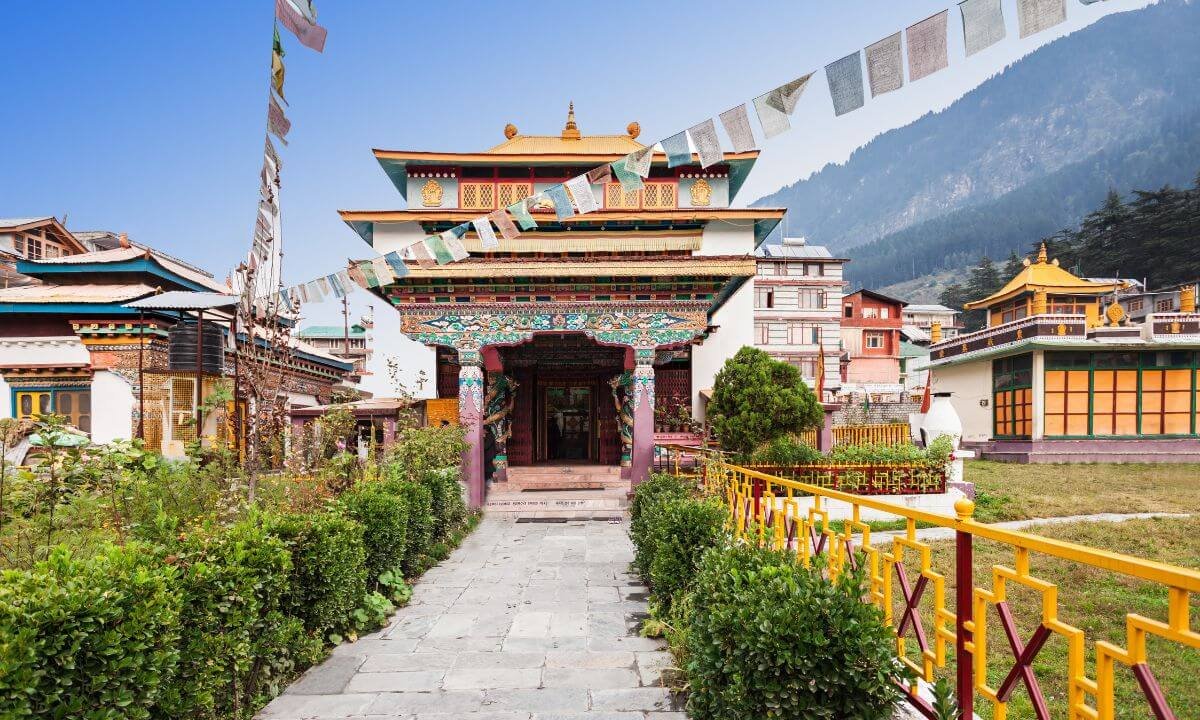Top Photogenic Locations in Himachal Pradesh for Capturing Navratri Vibes
Himachal Pradesh, a state tucked away in the gorgeous Himalayas, is a photographer's dream come true because of its abundance of breathtaking vistas and rich cultural heritage, especially during the colorful Navratri festival. Goddess Durga is the focus of this nine-night festival, celebrated with great enthusiasm. The traditional aspects serve as ideal backdrops to capture the spirit of the celebrations. This is a list of some of the most picturesque spots in Himachal Pradesh's main cities, with advice on when to take pictures and what makes each area unique.
- Dharamshala
Ideal Times for Shooting: The best times to shoot are early in the morning and late in the afternoon.
Dharamshala is well-known for its rich Tibetan culture and stunning views of the Dhauladhar mountain range. It is imperative to see the Tsuglagkhang Complex, home of the Dalai Lama’s temple. With snow-capped peaks in the background, vivid prayer flags make a striking picture ideal for photography. The morning hours are suitable for taking pictures here because the mellow light highlights the colors.
Unique Features:
Cultural Elements: Observe monks carrying out ceremonies or villagers going about their customs to gain an understanding of the culture.
Accessibility: From McLeod Ganj, it is easily accessible.
Challenges: Make early travel arrangements because festivals might get highly crowded.
- Shimla
The best times to shoot are early morning and late at night.
Shimla, the capital city, has a lot to offer, including places like Jakhu Temple and The Ridge. The Ridge is a broad boulevard with businesses and cafes lining it, offering expansive views of the mountains. The Jakhu Temple’s evening aarti, which honors Lord Hanuman, is visually striking because of the flickering lighting and followers’ chanting.
Unique Features:
Historical Architecture: The structures from the colonial era give an air of nostalgia.
Cultural vibes: Local cuisines and crafts are abundant in the busy markets during Navratri.
Challenges: Parking can be a challenge; think about taking public transportation.
- Manali
Sunrise and sunset are the best times to take pictures.
Manali is well-known for its snow-capped peaks and verdant valleys. Surrounded by cedar forests, the Hadimba Devi Temple is a great place to take pictures because of its beautiful wood carvings. A surge of devotees visits the temple during Navratri, bringing vitality to your photos.
Unique Features:
Natural Beauty: Take in the breathtaking vistas around Solang Valley.
Cultural Elements: Take pictures of the temple’s customs and festivities.
Challenges: The weather might change suddenly, so be ready for it.
- Kullu Valley
Mid-morning to late afternoon are the best times to take pictures.
Kullu is well-known for its colorful festivities and breathtaking scenery. During Navratri, the Raghunath Temple in Kullu town is significant and draws many worshippers. It’s a beautiful place with verdant hills as a backdrop.
Special Qualities:
Festive Atmosphere: Record customary music and dances during festivities.
Accessibility: Manali and Shimla are well accessible by road.
Challenges: On festival days, be prepared to manoeuvre past crowds of people.
- Narkanda
The best times to shoot for soft light are in the early morning or late afternoon.
Apple orchards and breathtaking views from Hatu Peak, which provide expansive views of the surrounding valleys, are two of Narkanda’s most famous features. This Mahamaya Temple is a popular spot for photography during Navratri because of its many tourists.
Unique Features:
Natural Landscapes: Depending on when you visit, you can get pictures of apple blossoms or fall foliage.
Cultural Significance: Take notes on customs observed by the community at the temple on Navratri.
Challenges: Few lodgings; make reservations in advance.
- Spiti Valley
Midday is the best time to shoot when the light is brilliant but not harsh.
Spiti Valley offers dramatic scenery with old monasteries like Key Monastery, which provides distinctive architectural shots against desolate mountains for those looking for rough landscapes. Even though it has nothing to do with Navratri, photographing local celebrations here can offer an exciting look into another culture.
Unique Features:
Remote Beauty: Distinctive, less-frequented sceneries.
Cultural Richness: Take pictures of traditional festivities and life in Sicily.
Challenges: Accessibility can be challenging because of the rugged terrain. Make sure your car is equipped for mountain routes.
Helpful Advice for Photographers:
The timing is crucial. To get excellent lighting, try to take pictures in the late afternoon or early morning.
Include Traditional Elements: To improve cultural authenticity, include local dress, customs, and celebrations in your photos.
Show respect by getting someone’s permission before taking their picture, especially in places of worship.
Make a plan in advance and watch local Navratri events to capture special moments.
Remain Adaptable: The weather in the mountains can change quickly, so be ready to modify your plans as necessary.
Conclusion
Particularly during Navratri, Himachal Pradesh is a veritable gold mine of picturesque settings that exquisitely combine rich cultural traditions with the natural world. Photographers can take breathtaking pictures that portray the natural beauty and rich cultural diversity of this Himalayan wonderland by visiting these locations: Dharamshala, Shimla, Manali, Kullu Valley, Narkanda, and Spiti Valley. So prepare to capture priceless moments with your camera, and bring your gear!


